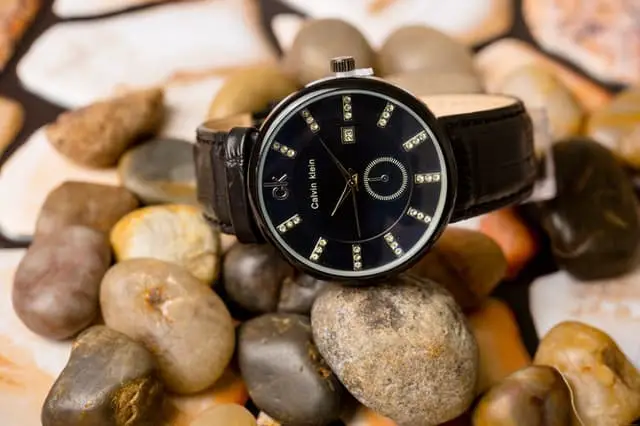Calvin Klein is a global fashion business that has been in the industry for more than fifty years. This American fashion house and luxury goods manufacturer specializes in leather, perfumery, home furnishings, watches, and many more products. The brand is known for marketing to fashion lovers using provocative and minimalistic marketing campaigns that people can’t take their eyes off of. Calvin Klein also shook the online fashion industry with a strong following when it entered the digital space.
The question then becomes, ‘What can we learn from Calvin Klein and the brand’s strategies to achieve such immense success?’
In the Calvin Klein brand analysis, we’ll be touching on their strategies, top competitors, and more. Now that you know what this blog covers, let’s begin.
Calvin Klein Brand Analysis – Its History
Calvin Klein was started in 1968 by Calvin Richard Klein in New York City. This brand is one of the most prominent luxury fashion brands globally, with an impressive presence in several categories. The brand’s catalog covers fragrances, watches, accessories, leatherwear, and other luxury products. The brand is currently owned by Phillips Van Heusen Group and is based in Manhattan, New York. Calvin Klein’s target audience is mainly focused on the wealthy middle class, and its products are exclusive works of top designers. Supermodels and celebrities promote their products all over the world.
Calvin Klein was Calvin Richard Klein’s bold idea. He borrowed a small amount of capital from his friend to open a suit shop at the famous New York Hotel. By the late 70s, Calvin Klein enjoyed an annual revenue of 30 million dollars. He purchased a license to also include other fashion items in his main design lines. Soon, Calvin Klein also sold furs, sunglasses, scarves, belts, shoes, and even bedsheets. He also included men’s casual wear and jeans in his product line, facilitating his annual sales growth.
The Calvin Klein brand analysis isn’t complete without mentioning the brand’s signature jeans which created a big stir in the fashion market. These jeans sold over 200,000 units on the launch day. Over time, the brand also launched a line of perfumes and cosmetics. They also gained worldwide fame by changing the concept of men’s underwear through innovative promotions. The company’s most famous advertising campaign was released in 1980 and was only a 30-second ad. To date, the brand continues to stir in the fashion space with its provocative ads.
Calvin Klein Brand Analysis – Its Marketing Strategies
In this Calvin Klein brand analysis, we’ll be exploring their strategies to become a staple in the fashion industry. This section explores the brand’s products, place, pricing, and promotion strategy; let’s take a look.
Product Strategy
Calvin launched Calvin Klein’s first products in 1971, including underwear, shirts, sportswear, coats, skirts, and pants. The brand’s elegant designs gave it a unique quality that soon became popular. Down the line, Calvin Klein added scarves, sunglasses, shoes, belts, and furs to the collection. In the late 1970s, the brand started the jean collection that gave it a firmer grip in the industry. The brand also began to make coats, skirts, and shirts in jeans. This collection was comfortable, stylish, and suitable for daywear.
These products helped to create a trademark for Calvin Klein products. In 1978, the brand introduced a makeup collection with over 18 skincare and beauty products. It wasn’t until 2013 that PVH helped Calvin Klein combine the jean, underwear, and sportswear collections into a single collection.
Place Strategy
Calvin Klein’s brand analysis isn’t complete without the brand’s place strategy. When it comes to placement, Calvin Klein possesses a strong presence in the international market. Their first store was in Dallas, where the brand sold household linen, apparel, accessories, perfumes, and many other products. The brand now has its flagship store at Madison Ave in New York. Outside the United States, Calvin Klein has an international presence in 21 countries. Their clothes are also available at high-end department stores like Saks Fifth Avenue, Bergdorf Goodman, and many more.
In Asian countries, Calvin Klein focuses mainly on fragrance, underwear, and other collections suitable for the average income earners. Since the brand possesses online and offline stores, it has several distribution channels that help make its products available. There are also small shops with Calvin Klein products, but they’re pretty few. This ensures that there’s a lesser chance of brand switching among customers.
Price Strategy
When it comes to price strategy, Calvin Klein brand analysis shows that their product price is usually steep because it markets its products to those in the middle and upper classes. Calvin Klein’s designer clothes cost more than basic clothing products in the market. The brand’s main competitors are Hugo Boss, Tommy Hilfiger, Giorgio Armani, Ralph Lauren, and other luxury brands. However, Calvin Klein attempts to keep prices lower than its competitors to gain greater market shares.
Calvin Klein successfully attracts customers’ attention and gains fame with its innovative pricing strategy. By reducing costs, the brand can earn more profits. Due to this lower price, customers tend to stick with the brand and remain loyal. You can also purchase several Calvin Klein products online as frequent deals, and discounted prices for old stocks are available. This factor also leads to a higher number of sales. Calvin Klein’s premium products are usually sold under a black label that targets high-end customers. Although the premium products have a higher profit margin, they’re available in smaller quantities.
Promotion Strategy
This Calvin Klein brand analysis shows that Calvin Klein regularly promotes their products to customers on several channels. The brand indulges in social media promotions, sales campaigns, TV ads, direct marketing, and even personal selling. With tech and social media advancement, Calvin Klein uses these new areas to advertise their products and generate sales. As mentioned before, the brand is also known for its ad campaigns.
Like many other luxury brands, Calvin Klein uses celebrities to showcase their products. Some top stars Calvin Klein uses are Eva Mendes, Scarlett Johansson, Justin Beiber, Alexander Skarsgard, Kendall Jenner, and many more. Most Calvin Klein products have the initials CK on them to establish the brand. The brand also uses email marketing to connect with its clients and send them information about new products and promotional items.
Top Calvin Klein Competitors
To further dive into Calvin Klein’s brand analysis, let’s review the brand’s top competitors. As a luxury brand, its principal competitors are fashion giants. Below are Calvin Klein’s top five competitors in the fashion industry.
Ralph Lauren
Ralph Lauren is an American fashion company formed in 1967 with its headquarters in New York. The company offers mid-range and luxury fashion products like Calvin Klein. They’re famous for their fragrances, jewelry, luxury clothing, furniture, footwear, and more. Ralph Lauren products are available in multiple stores. They also offer different products for men and women in all age groups. When it comes to design, Ralph Lauren’s designs are unique and comfortable, making them quite visible in the fashion industry.
Armani
Armani is also a top Calvin Klein competitor. This company is an Italian luxury fashion company founded by Giorgio Armani in 1975. Its headquarters are in Milan, Italy and its designs focus on quality and classy global apparel. This is a top brand in the fashion industry and is usually associated with status. The company is famous for its hand-stitched clothing, and they have top designers who create Armani products with great care. The goal is to consistently produce unique and quality designs. Like the promotion strategy in this Calvin Klein brand analysis, Armani also possesses an innovative promotion strategy.
Chanel
Chanel is another Calvin Klein competitor we cannot ignore in this Calvin Klein brand analysis. This is a private fashion company formed in 1909. Likewise, Chanel is a top fashion house specializing in women’s clothes and luxury goods. This is a well-established brand famous for its functional and comfortable styles. In addition, their collections are classic and usually timeless. Channel is renowned for its luxury brand collections and signature perfume.
Tommy Hilfiger
Another top competitor is Tommy Hilfiger which is a leading American fashion brand. It was formed in 1985, and they produce multiple products like footwear, fragrance, apparel, and several home furnishings. Tommy Hilfiger’s designs align with the American nature and are usually creative modern, and casual. They have over a thousand retail stores and provide outfits for all age groups and genders.
Hugo Boss
Hugo Boss is a famous German luxury fashion house formed in 1924. The company offers accessories, high fashion wear, and footwear. The brand started with the production of uniforms and then moved into producing suits for men. Over the years, the company added women’s collections to its products. As an expert in high-end designer clothing, Hugo Boss is popular for its high brand value. They’ve made a name in the top fashion shows in Paris and Milan and, therefore, have a space at the top of the fashion industry.
Final Thoughts
Calvin Klein is a top American fashion brand with a top spot in the fashion space. Being present in several fashion domains, Calvin Klein can cater to a broad audience, increasing annual profits for the company. Despite having top competitors like Ralph Lauren, Tommy Hilfiger, Chanel, Armani, and Hugo Boss, Calvin Klein scales the fashion space to become the leading luxury fashion brand.








